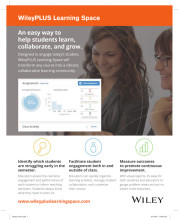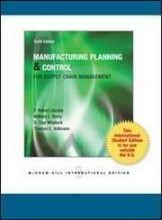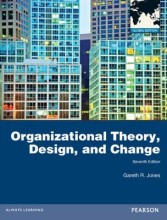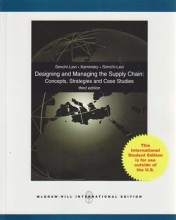Summary: Purchasing And Supply Chain Management | 9781473749443 | ARJAN VAN WEELE
- This + 400k other summaries
- A unique study and practice tool
- Never study anything twice again
- Get the grades you hope for
- 100% sure, 100% understanding
Read the summary and the most important questions on Purchasing and Supply Chain Management | 9781473749443 | ARJAN. VAN WEELE
-
1 The role of purchasing in the value chain
-
1.1 Introduction
This is a preview. There are 1 more flashcards available for chapter 1.1
Show more cards here -
Why are purchasing and supply chain management so important for companies?
As business is becoming more and more competitive, purchasing and supply chain management are increasingly recognized by top managers as key business drivers. Since most companies today spend more than half of their sales turnover on purchased parts and services, efficient and constructive relationships with suppliers are key to the company's short - term financial results and long - term competitive position. -
1.2 The role of purchasing in the value chain
-
What is value chain management (mostly used in business strategies)?
All stakeholders belonging to the same value chain are challenged to improve the (buying) company's value proposition to its final end - customers, i.e. consumers. A value chain consists of primary activities and support activities. -
What are primary activities?
Primary activities are those activities that are required to offer the company's value proposition to its customers. They consist of inbound logistics, operations, outbound logistics, marketing and sales, and customer activities. -
What are support activities?
Those value activities that are required to support the company's primary activities. These include purchasing, technology development, human resources management and facilities management (those activities aimed at maintaining the firm's infrastructure) -
What is facilities management?
Relates to the management (planning, execution and control), and the realization of housing and accomodation, the services related to these, and other means in order to enable the organization to realize its mission. -
What's the difference between direct and indirect procurement?
Direct procurement: procurement of all materials and products that are used for manufacturing a company's end products. (buying for primary activities)
Indirect procurement: Procurement of all materials, components and services that are used to support the company's infrastructure and back- office activities. (buying for support activities) -
1.3 Definitions of concepts
This is a preview. There are 5 more flashcards available for chapter 1.3
Show more cards here -
What's the difference between purchasing and procurement?
Procurement is a somewhat broader term. It includes all activities required to get the product from the supplier to its final destination. It encompasses the purchasing function, stores, traffic and transportation, incoming inspection, and quality control and assurance. Many firms also consider recycling to be part of this. Procurement is based on total cost of ownership- thinking. -
1.4 Importance of purchasing to business
This is a preview. There are 1 more flashcards available for chapter 1.4
Show more cards here -
What's a DuPont analysis?
Financial diagnostic tool to calculate the company's return on investment based upon sales margin and capital turnover ratio. Used to assess the effect of a 2% procurement saving on the company's return on investment (ROI). -
1.5 Classification of purchased goods
-
Which categories of purchased materials and services can be grouped?
- Raw materials
- Supplementary materials (oil, cooling water, polishing materials,...)
- Semi - manufactured products. These products have already been processed once or more, and they will be processed further at a later stage.
- Components
- Finished products or trade items
- Investment goods or capital equipment
- MRO items (indirect materials/ consumable items)
- Services
-
1.6 Challenges and changes in the procurement context
This is a preview. There are 1 more flashcards available for chapter 1.6
Show more cards here -
Give some examples of developments and changes in supply and purchasing strategies.
- Global sourcing: proactively integrating and co- ordinating common items and materials, processes, designs, technologies and suppliers across worldwide procurement, engineering and operating locations.
- Leveraged procurement and supply strategies: in companies with several manufacturing plants, important savings can be realized by combining common materials requirements.
- Corporate social responsability: how to contribute to a better world, a better environment and better labour conditions (People, planet, profit)
- Resource scarcity
- Supplier integration
- Early supplier involvement (ESI)
- Higher grades + faster learning
- Never study anything twice
- 100% sure, 100% understanding
Topics related to Summary: Purchasing And Supply Chain Management
-
Industrial buying behaviour: decision - making in purchasing - Organization buying behaviour: basic characteristics
-
Industrial buying behaviour: decision - making in purchasing - Models of industrial buying behaviour
-
Industrial buying behaviour: decision - making in purchasing - Purchasing process management
-
Industrial buying behaviour: decision - making in purchasing - The purchasings process in detail
-
The purchasing management process - Primary tasks and responsibilities
-
The purchasing management process - Purchasing management process
-
The purchasing management process - How purchasing and supply management develops over time
-
Buying business services - The pre-contractual stage
-
Contract management for complex projects
-
Public procurement
-
Purchasing and business strategy - Purchasing's role in strategic management theory
-
Purchasing and business strategy - Global sourcing
-
Purchasing and business strategy - Class 1 additional notes
-
Category sourcing: developing effective sourcing strategies
-
Purchasing, corporate social responsibility and integrity - Class 12 & 13 additional notes
-
Extra subject: IT Outsourcing (ITO) - The ITO theories (TCE/ TCT)
-
Extra subject: IT Outsourcing (ITO) - ITO Software Development VS Infrastructure Management

































